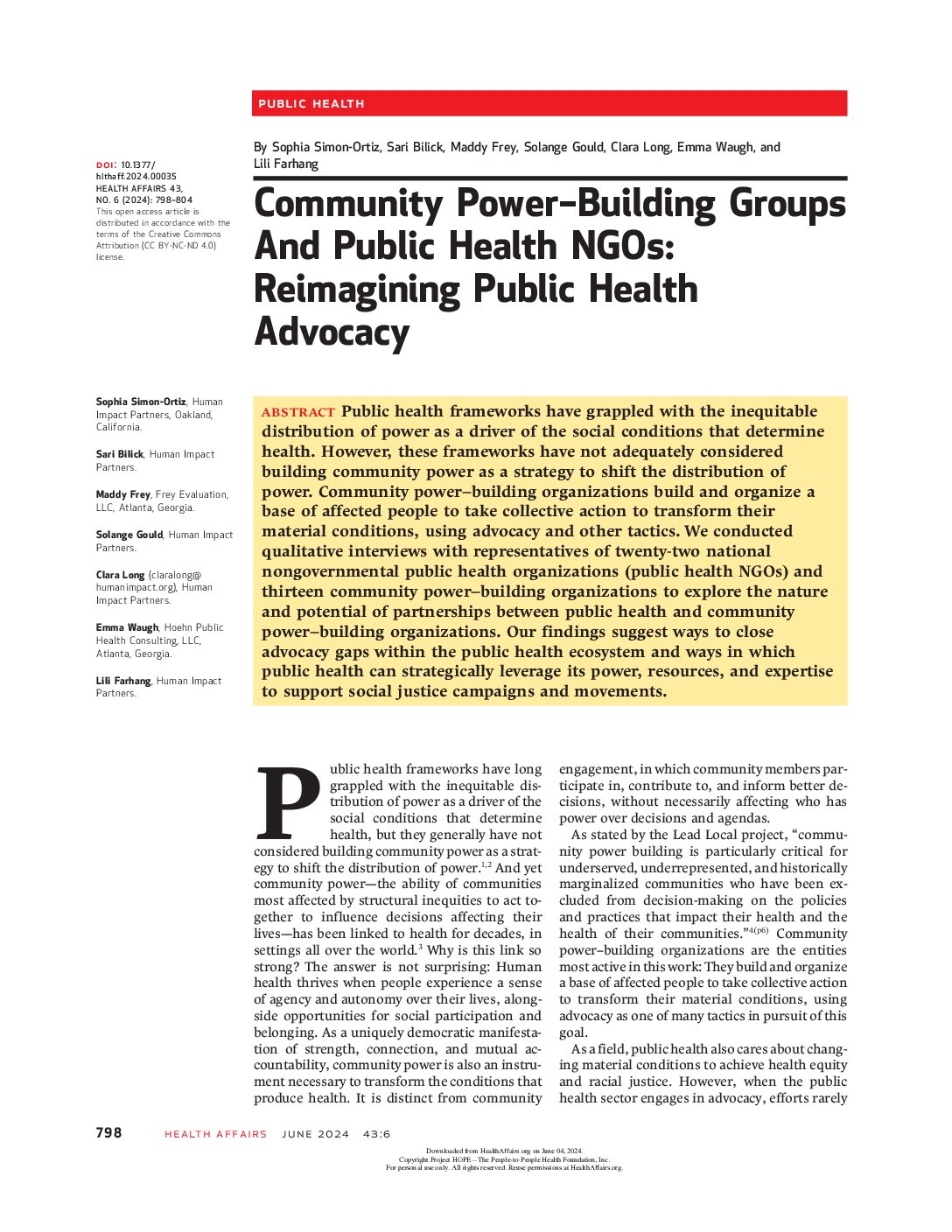Build & Bridge Library
Exploring the Potential for Cross-Sector Collaboration
The Build and Bridge Library is designed to help you improve your partnerships with community-based organizations and cross-sector partners. It features a searchable library, with dozens of resources, AI-powered tools, and more to help you strengthen partnerships to improve the public’s health. Explore the Build and Bridge Library below and check out this demo video for an overview.
What is the purpose?
This Library is intended to answer your questions about partnerships and enhance your strategies for partner engagement.
Who created it?
This Library was created in partnership with APHA, IP3 and our advisory group made up of health department staff, community-based organization staff and cross-sectoral partners.
Who is this for?
This Library is designed with local and state health department staff in mind. We look forward to continuing to expand our audience.
Tools
The Library offers a wide range of resources to support every stage of partnership development—from initiating relationships and building community power to sustaining long-term collaboration. Explore case studies, guides, toolkits, webinars, and more within the searchable library, or use our AI-powered tools to deepen your learning and strengthen your partnership strategies.
AI-Powered
AI-Powered
Characteristics of Successful Partnerships
Through APHA’s research we have collected some key characteristics of successful partnerships, we hope that these can help guide your partnerships.
Hover over the graphic to learn more.

Relationship and Trust Building
- All parties confirm shared values and vision
- Practice and honor bi-directional transparency
- Long-term/ lots of time investment made
- Foster trust by recognizing past harms (acknowledge history) and rebuild where needed
- Emphasize humility, humanity, and active listening
- Lasts beyond staff turnover and/or funding changes
Equity and Power Dynamics
- Address and disrupt existing power dynamics and prioritize mutual decision-making over feedback-only models
- Apply principles of power-sharing and power-shifting to ensure all voices are respected; humility is essential, e.g., cultural humility
- Practice collaborative leadership
- Attend to Inclusivity
- Recognize that CBOs are not a proxy for community members but can serve as connectors
Clear Structure and Accountability
- Mutually define clear roles, responsibilities, goals, and expectations
- Establish intentional governance structures to support shared decision-making and power distribution
- Be action- and results-oriented
- Ensure mutual accountability, with follow-up actions demonstrating commitment to the partnership
Resource Sharing and Funding
- When possible, jointly secure dedicated resources and funding for sustained collaboration, not just short-term, transactional support
- Share resources and complementary assets across partners, valuing each organization’s strengths
- Provide supportive infrastructure, including staff, to support ongoing partnership activities
Effective Communication and Flexibility
- Maintain open, ongoing, bidirectional dialogue—not only in crises
- Use inclusive language and translation where needed for cross-sector collaboration
- Recognize each partner’s unique strengths, limitations, and evolving needs, with flexibility to adjust as the partnership progresses
Featured Resources
Collaboration and partnership almost always involve challenges and opportunities, and we hope that the resources in this Library will help you navigate these. Here are a few featured resources you can find in this Library.
Get Started

Co-Governing Towards Multi-Racial Democracy, Partners in Dignity and Rights, Race Forward

Community Power–Building Groups and Public Health NGOs: Reimagining Public Health Advocacy

A Campaign for Dignity and Respect
From Our Partners

Providence Case Story: Turning the Tide in Providence

The Roots of Health Inequity

